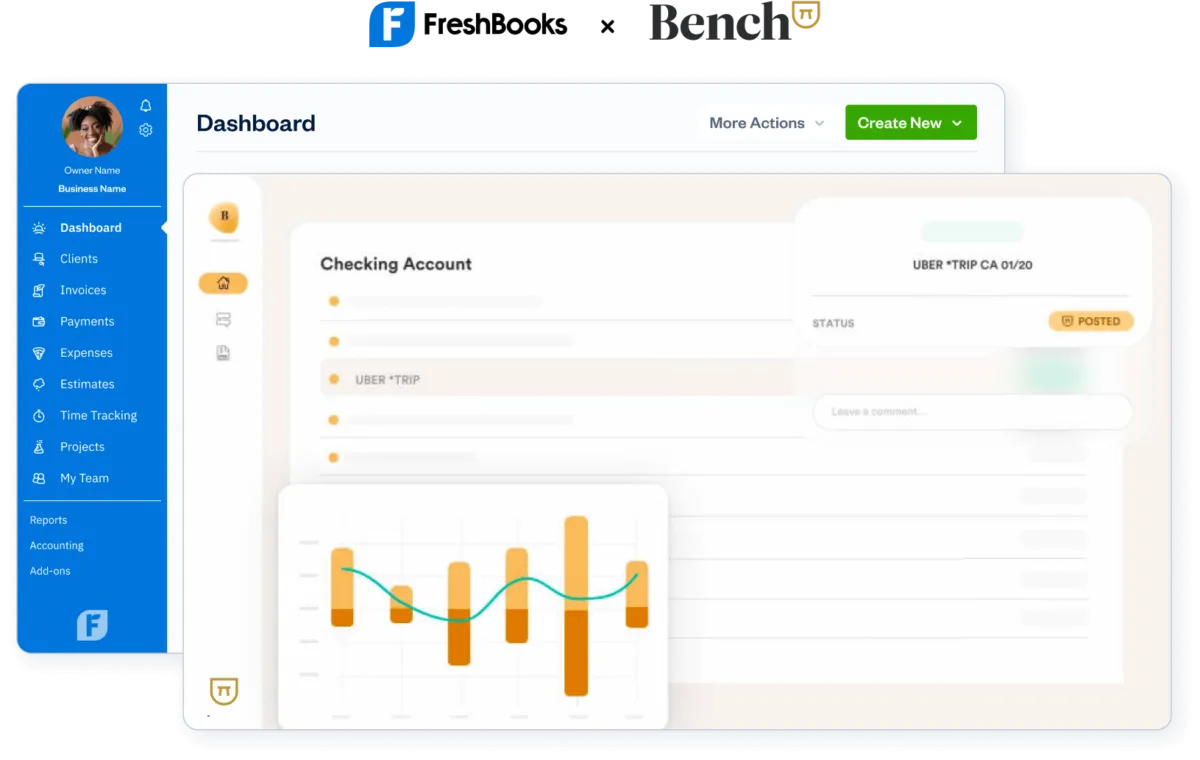Job Costing: What It Is & How To Calculate It

Job costing is an important accounting process to go through after one job is complete, determining the actual costs of the job, including direct labor cost, material cost, and overhead, and what the revenue was. This is done to evaluate the overall profitability of the type of work that was done and to determine if there are any areas where costs could be cut in the future.
Key Takeaways
- Proper job costing is an important accounting tool that determines exactly how much money was spent to complete a project.
- This accounting technique is used to streamline and reduce many costs in the future.
- Tracking project costs includes looking at the costs of labor, indirect and direct material, and overhead.
- This process allows business owners to make responsible future decisions based on past jobs and improve efficiency.
- Any business can benefit from job cost tracking.
- Investing in job costing software or accounting software is often the easiest way to track project costs.
What we’ll cover:
What Is Job Costing in Accounting?
What Is a Predetermined Overhead Rate?

What Is Job Costing in Accounting?
Job costing, also called project-based accounting, is the process of tracking costs and revenue for each individual project. Job costing looks at each project in detail, breaking down the costs of labor hours, materials, and overhead. It makes fewer assumptions than other costing methods.
Job costing is commonly used by construction companies, where costs vary widely from job to job. But it’s also used by manufacturers, creative agencies, law firms, and more. Because job costing tracks costs in detail for each job, it can be a helpful tool for small business owners to evaluate individual jobs and see if any expenses can be reduced on similar projects in the future.
If keeping spreadsheets and calculating labor and overhead costs feels like too much for you to do on your own, you may wish to utilize professional bookkeeping services. FreshBooks connects clients with real bookkeepers who can help you with all things accounting, from taxes to job costing. Click here to learn more.

How to Calculate Job Costing
Job costing is calculated by accumulating the cost of direct labor costs, direct material costs, indirect material costs, and total overhead costs on a specific job. The accounting activities involved in calculating job costing are:
Calculate Labor Costs
Calculate how much it costs your business to employ all staff members who will work on the project per day. The direct labor costs calculation involves multiplying the payroll day rate by the amount of time you estimate you’ll need to complete the job. If you rely on subcontractors to complete work your company doesn’t do itself, factor those costs into your total labor costs for the job. It can help to get an estimate from each of these contractors.
Calculate Material Costs
Calculate the cost of all materials used on the job. For a construction business, direct material costs would include raw materials such as lumber, wiring, screws, and more, as well as indirect material that is not used in the finished product, like office and cleaning supplies. You may choose to add a margin to these materials to cover other related costs, including wastage or delivery fees.
Estimate Applied Overhead
Overhead is the most difficult cost to calculate because you’ll need to rely on an approximation instead of the actual cost. You’ll need to accurately estimate the total overhead costs factoring into the job, including rent on your office, administrative costs, and depreciation, or machine hours, on the equipment used. Many small businesses apply a blanket overhead fee to each project, such as 10 percent per job. An accountant can help you analyze your business and develop a specific approach to overhead. Or, you can calculate your predetermined overhead rate.
Written as an equation, job costing is calculated like this:
Job Cost Formula

What Is a Predetermined Overhead Rate?
The predetermined rate is a calculation used to determine the estimated overhead costs for each job during a specific time period.
Most businesses create annual budgets that include estimated overhead and estimated activity for the year. You can use these budget estimates to calculate an overhead rate to apply to each of your jobs.
To calculate your predetermined overhead rate, you use the following equation:

There are usually different activity estimates included in your budget; opt to use the activity that applies most directly to your company’s overhead costs, for example, your estimated direct labor hours.
Predetermined Overhead Rate Example
You want to use job costing in your construction business, and you’re looking to calculate your predetermined rate to use for job costing. You estimate that in 2025, you’ll have $500,000.00 in overhead costs. You also estimate that your employees involved will work 10,000 hours in 2025.
Your calculation would look like this:

Now that you’ve calculated your predetermined overhead rate, you can apply it to jobs for the purpose of job costing as the applied overhead cost. For each direct labor hour worked you’ll add $50 of overhead to the job. This is your applied overhead.
Job Costing Example
Your law firm completed a client’s case. The total cost of your firm’s billable labor hours is $20,000 and you will bill $2,500 in material costs. Your firm has determined your applied overhead cost for the job is $8,500.
You now have all the elements you need. Here’s how to calculate your job costing:
Direct Materials ($2,500) + Direct Labor ($20,000) + Applied overhead ($8,500) = $31,000
Your total job cost for your client’s case is $31,000.
Benefits of Job Costing
Although it may feel like extra work you do not want to add to your staff’s plate, calculating project costs after the job is complete is a worthwhile endeavor.
Cost Control
Identifying and reducing costs to your own business by budgeting and making changes can maximize the amount of revenue you take in, affecting the success of your business in the long term.
Profit Maximization
Collecting data like the direct and indirect costs and revenues associated with a job helps you determine the profitability of that type of work and points out where money or time may have been wasted.
Improved Efficiency
Performing an analysis that looks into job inefficiencies can help you make changes now that will positively affect your business in the future. This may include reducing the number of employees contracted onto any given job, retraining those who are underperforming, or promoting employees who work more efficiently than others.
Enhanced Decision-Making
Calculating the costs before taking on a new contract can ensure you do not negotiate for payment that is too little, which will affect your future profitability.
In addition to providing project cost control, profit maximization, improved efficiency, and enhanced decision-making, job costing can also be implemented using accounting software like FreshBooks. FreshBooks offers time tracking, expense tracking, project management, and reporting tools that can help small business owners accurately track the costs associated with each job. Click here to sign up and try FreshBooks software for free.
Who Uses Job Costing?
Any business that creates a product or offers a service can use job costing. It is most often used in the construction industry, but can also be used by businesses like:
Health Care Organizations and Hospitals – These types of institutions incur a wide range of costs, like the purchase of medical equipment, the salaries for doctors and nurses, support staff wages, cleaning supplies, vendor costs, and the maintenance of machines and equipment.
Retail Companies – It takes a lot more than having the product on hand to run a retail business. Retailers need to factor in warehouse rent, staff wages, IT and website developers, advertising costs, and many other costs involved that require consistent monitoring to remain profitable.
Engineering Firms – Labor, overhead costs, and other fees need to be taken into account, whether the engineering firm is overseeing smaller projects or multi-year site supervision and consultancy.
Advertising Firms – Marketing and advertising costs may include rent, office supplies, computer software, utilities, internet services, and much more. Factoring the actual costs of the job into their prices will determine how much they charge to run an advertising campaign with a client.
Distribution Companies and Transportation Providers – Gas, vehicle maintenance, and the direct labor cost of drivers are all important costs of running these businesses. You also need to include insurance costs, licensing fees, and logistics management, all of which factor into running a profitable business.

Conclusion
Job costing is an investment into your company that is necessary for the ongoing success and profitability of your business, ensuring you get paid enough not only to cover your costs, but also to make enough of a profit to grow your business.
Any type of business can benefit from job costing, from construction companies to accounting firms. Accounting software can help you keep track of receipts, stay on track with your financial goals, and ensure you are getting paid what you are worth.
FAQs on Job Costing
What is job costing vs. process costing?
Job costing is a method used in accounting that notes all job costs associated with a project, as well as the revenue generated. Process costing is collecting and determining the manufacturing costs of each unit produced in a mass-production environment.
Why would a company use job order costing instead of process costing?
Creating a job cost sheet helps companies stay profitable by taking stock of how much past jobs have cost, allowing business owners to make changes to improve efficiency and reduce costs. Process costing is only used in the case of mass production of a product, determining the unit cost per item.
What are the advantages and disadvantages of a job costing system?
Advantages include increasing the efficiency and profitability of your business, cost control, and improving your decision-making process in future endeavors. Disadvantages include the extra work and commitment it takes and investment in new technology like payroll processing services and accounting software.
What is job order costing examples?
It is a type of costing used to figure out how much it costs a business to manufacture a small batch of unique items for a customer. Some examples include personalized t-shirts for a team, props used for filmmaking, or law firms calculating what to charge clients.
What are the 2 features of job costing?
The two main features of job costing are determining how much the cost of similar future jobs will be and improving the overall efficiency and profitability of your business through careful analysis of total costs vs. profit.
What are the limitations of job costing?
While job costing is useful in many cases, it also entails more clerical work and can be expensive, utilizing software and careful tracking. It cannot account for unexpected costs, and it may not be useful for fast-paced and cost-efficient jobs.
Reviewed by
Jami Gong is a Chartered Professional Account and Financial System Consultant. She holds a Masters Degree in Professional Accounting from the University of New South Wales. Her areas of expertise include accounting system and enterprise resource planning implementations, as well as accounting business process improvement and workflow design. Jami has collaborated with clients large and small in the technology, financial, and post-secondary fields.
RELATED ARTICLES


 Small Business Accounting 101: A 10-Step Guide for Financial Success
Small Business Accounting 101: A 10-Step Guide for Financial Success How to Increase Profit Margins: Top 5 Ways to Increase Your Small Business’s Revenue
How to Increase Profit Margins: Top 5 Ways to Increase Your Small Business’s Revenue How To Calculate Liabilities: A Step-by-Step Guide with Formulas
How To Calculate Liabilities: A Step-by-Step Guide with Formulas What Is an Income Statement?
What Is an Income Statement? How to Calculate Accounts Receivable Turnover
How to Calculate Accounts Receivable Turnover What Are Fixed Assets? | A Simple Primer for Small Businesses
What Are Fixed Assets? | A Simple Primer for Small Businesses